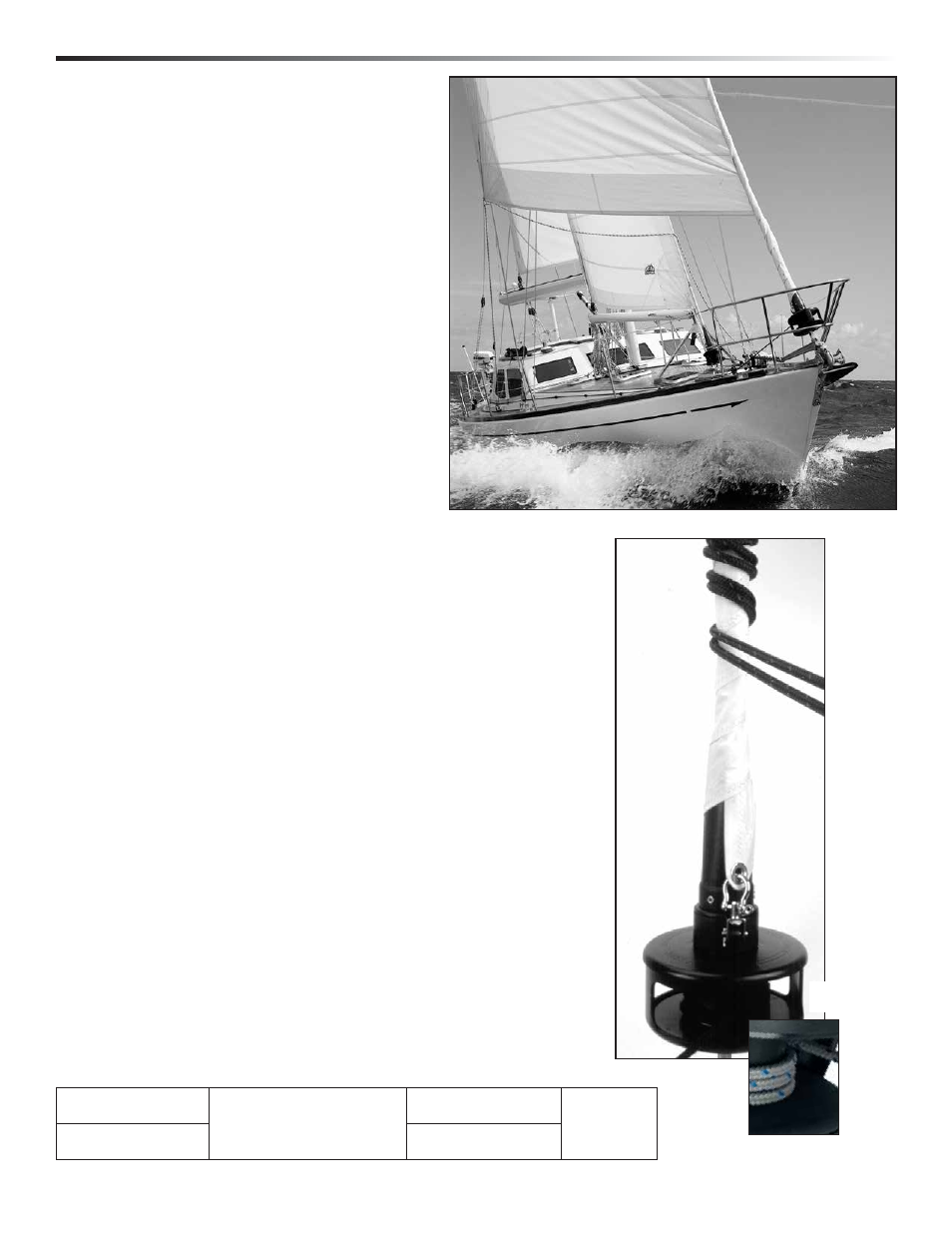Harken 7411.11 1/2 MKIV Jib Reefing & Furling User Manual
Page 40

Operation
Reef/Secure Sail
40
MKIV Underdeck Unit 1, 2, 3
Reef
A sail may be partially furled before you resume
sailing. This is known as reefing.
Many sailors find it helpful to place marks on
foot of sail so that they can reef to a variety of
predetermined jib sizes. This allows marks to be
placed on jib lead tracks or toe rail so that lead
block position can be changed to correspond
to reefed jib.
Sails are generally reefed to balance boat and to
reduce heeling moment. Sails may also be reefed
to improve visibility or to slow boat while sailing
in congested areas or entering or leaving harbors.
Secure Sail
When furling the sail completely, make sure sheets and furling line are
secured. Check amount of line on the spool compared to the furled sail
before using the system.
A furled sail must have:
a. Two to three wraps of jib sheet wrapped around sail.
b. Two wraps minimum of line wound on spool.
c. Furling line securely cleated.
d. Jib sheets securely wrapped on winch and held in self-tailing jaws.
Furl at dock with tension on sheets to duplicate furling in high wind.
Remember sails furled in light wind and left loosely secured can be a
problem if wind increases.
IMPORTANT! Remove sail from furler if extreme winds are predicted,
especially if boat is left unattended.
IMPORTANT! Check all points above—a, b, c, and d—when leaving
boat to avoid damage to furler or boat.
A loosely rolled sail can catch wind in a storm. Sheets or furling lines can
loosen as winds increase and allow furler to unroll. If no wraps of line are
on spool, the line deadend can break the drum when the boat motors
through waves.
Be sure mooring lines are not placed across furling line where they may
cause chafe.
a. 2–3 wraps
If you want to:
Add more wraps of
jibsheet on furled sail. Untie jib sheets and keep sail
completely rolled. Secure with
sail tie.
Turn spool to unroll a
couple of wraps of line.
Retie sheets.
Add more wraps of line
on spool.
Turn spool to add a
couple of wraps of line.
b.
2–3 wraps
